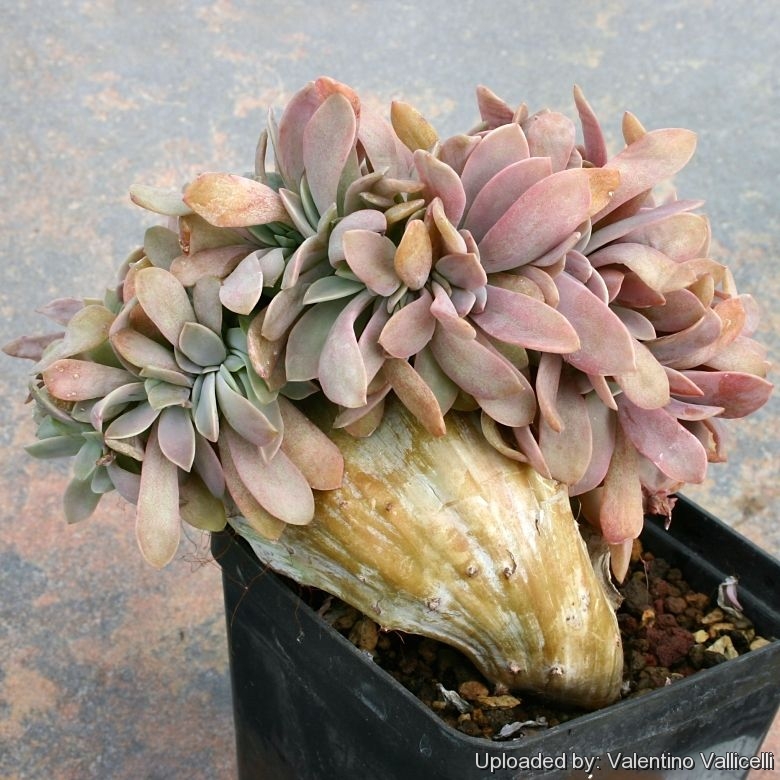
х Graptoveria cv. Fred Ives f. cristata Photo by: Valentino Vallicelli
People cannot resist the glowing colours of the foliage of this delightful plant.
It is quite hardy and - depending on moisture conditions - can handle slight frosts.
Origin and Habitat: Garden origin (Nursery produced cultivar)
Synonyms:
Description: Graptoveria 'Fred Ives' is a cross between Graptopetalum paraguayenseSN|27644]]SN|27644]] and Echeveria gibbifloraSN|29075]]SN|29075]]. It is a large shrub-forming cultivar and a very vigorous grower in the garden, that offsets to produce a clump and can take over an area if let alone.
Rosettes: It produces rosettes up to 20 cm tall by nearly 20-30 cm wide atop short 10-30 cm tall stems
Leaves: Broad, stiff, overlapping each other, with concave upper surface, rubbery to the touch, waxy pearly-bronze to purplish yellow-orange to blue green (depending on time of year and growing conditons). Often shading from grey-blue at the centre out to orange-bronze-purple. The purple blush is fairly consistent throughout the seasons. Higher light and heat seem to increase the purple a bit, though.
Flowers: 30-50 cm long arching branched inflorescence bearing red-orange centred pale yellow flowers
Blooming season: Summer.
Remarks: The cultivar “Fred Ives” has given rise to a beautiful crested form with sunset colours & wonderful habit. It creates dense round mounds of tightly packed smaller leaves.
Subspecies, varieties, forms and cultivars of plants belonging to the Graptoveria cv. Fred Ives group
 х Graptoveria cv. Fred Ives: is a cross between Graptopetalum paraguayense and Echeveria gibbiflora. It is a vigorous grower with broad laves waxy pearly-bronze to purplish.
х Graptoveria cv. Fred Ives: is a cross between Graptopetalum paraguayense and Echeveria gibbiflora. It is a vigorous grower with broad laves waxy pearly-bronze to purplish. х Graptoveria cv. Fred Ives f. cristata: is a beautiful crested form with sunset colours & wonderful habit. It creates dense round mounds of tightly packed smaller leaves.
х Graptoveria cv. Fred Ives f. cristata: is a beautiful crested form with sunset colours & wonderful habit. It creates dense round mounds of tightly packed smaller leaves.
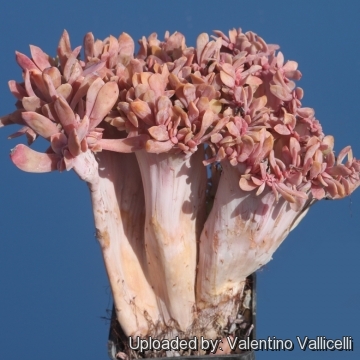 х Graptoveria cv. Fred Ives f. cristata Photo by: Valentino Vallicelli
х Graptoveria cv. Fred Ives f. cristata Photo by: Valentino Vallicelli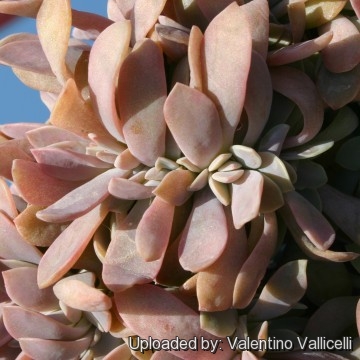 х Graptoveria cv. Fred Ives f. cristata Photo by: Valentino Vallicelli
х Graptoveria cv. Fred Ives f. cristata Photo by: Valentino Vallicelli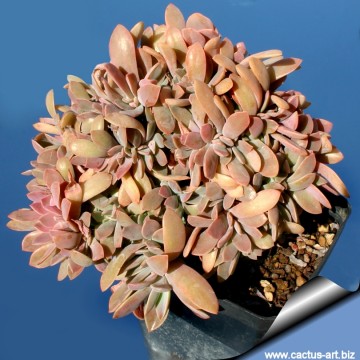 х Graptoveria cv. Fred Ives f. cristata Photo by: Cactus Art
х Graptoveria cv. Fred Ives f. cristata Photo by: Cactus Art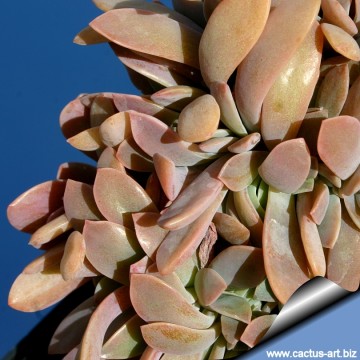 х Graptoveria cv. Fred Ives f. cristata Photo by: Cactus Art
х Graptoveria cv. Fred Ives f. cristata Photo by: Cactus Art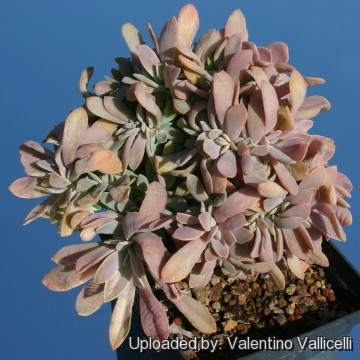 х Graptoveria cv. Fred Ives f. cristata Photo by: Valentino Vallicelli
х Graptoveria cv. Fred Ives f. cristata Photo by: Valentino Vallicelli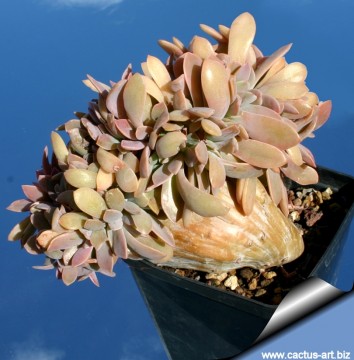 х Graptoveria cv. Fred Ives f. cristata Photo by: Cactus Art
х Graptoveria cv. Fred Ives f. cristata Photo by: Cactus Art х Graptoveria cv. Fred Ives f. cristata Photo by: Cactus Art
х Graptoveria cv. Fred Ives f. cristata Photo by: Cactus Art х Graptoveria cv. Fred Ives f. cristata Photo by: Valentino Vallicelli
х Graptoveria cv. Fred Ives f. cristata Photo by: Valentino VallicelliCultivation and Propagation: Very easy and reliable plant it can stay outdoors in summer, in mild climate it can grows in the garden where it takes lots of water without rotting. It is relatively slow growing and very slow to sucker (if at all). It prefers a bit of afternoon shade but does also well in bright light with high heat situations. It is however adaptable to low light situations too. Plant in fertile free draining soil or a cacti well-drained mix. Water well during the warmer months, preferably from below, and sparingly in winter. Hardy hybrid tolerant of a wide range of conditions including some frost. The flowers spike sometime wilt because the rosette is almost drained of moisture, and may wither badly. Early removal of the dying flower stems will prevent this being aggravated by the production of seed, which of course will have the same effect, since the flower stems stay turgid for some time to support the seed production.
Crested growth: Unlike 'monstrose' varieties of plants, where the variation from normal growth is due to genetic mutation, crested growth can occur on normal plants. Sometimes it's due to variances in light intensity, or damage, but generally the causes are unknown. A crested plant may have some areas growing normally, and a cresting plant that looks like a brain, may revert to normal growth for no apparent reason. Any normal shoots should be removed to promote the growth of the crest.
Uses: Beautiful succulent for container planting adding colour to mixed collections. Excellent for windowsills or as colour accent in rock garden or dish garden. Ideal for adding dramatic foliage contrast to garden beds and borders and colour to the winter garden.
Propagation: The crested form is usually propagated by division of larger specimen. The standard (non crested) form is usually propagated by suckers or basal leaves, if If the plant is repotted some of the bottom leaves can be removed, in order to attempt leaf propagation, it is also a common practice to collect the leaves on the flower stem. However many such cuttings will dry out without producing a plantlet, but with perseverance it is likely to get a few new plants.


















